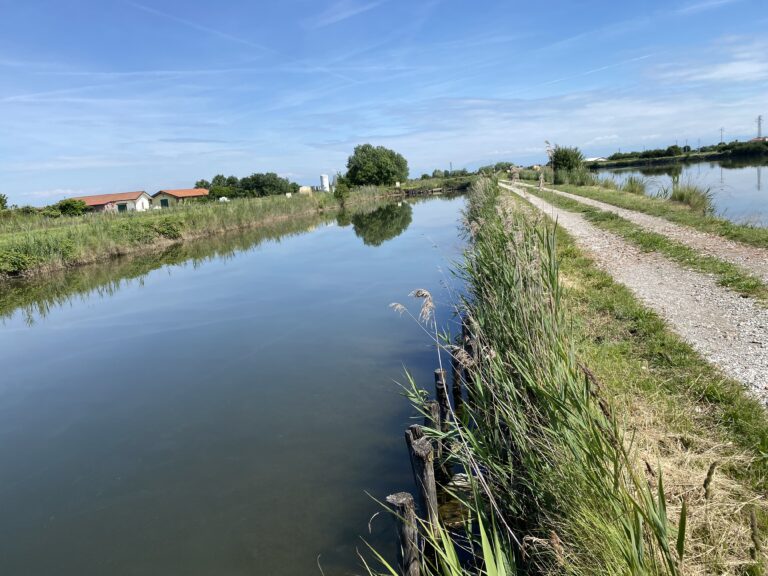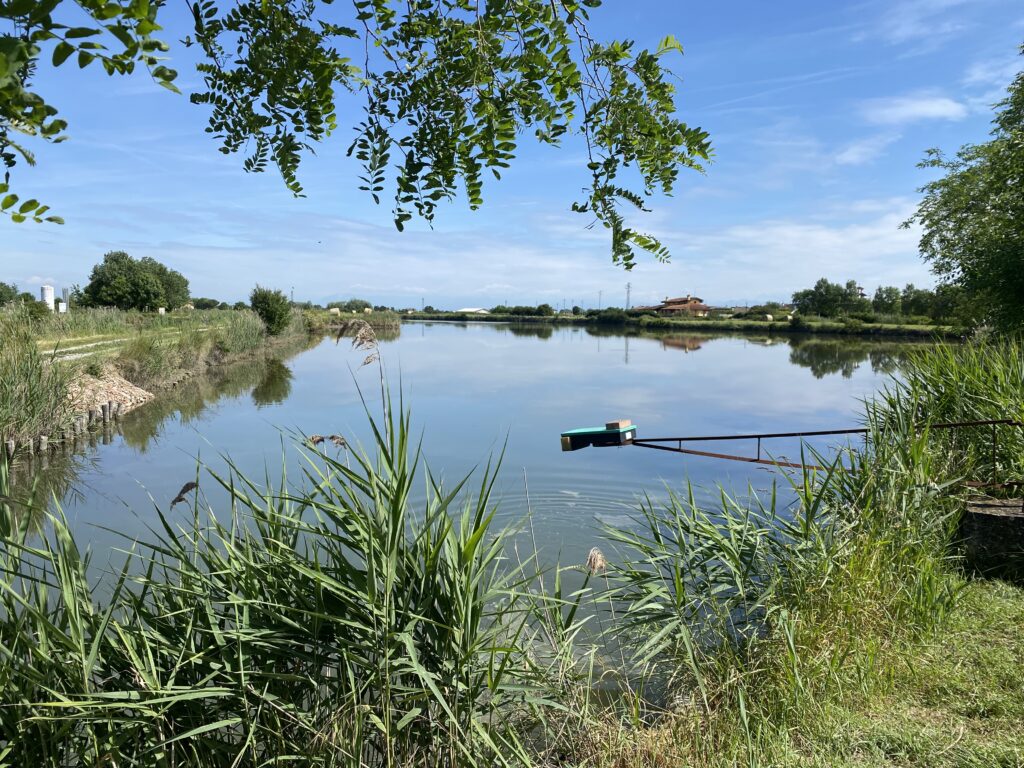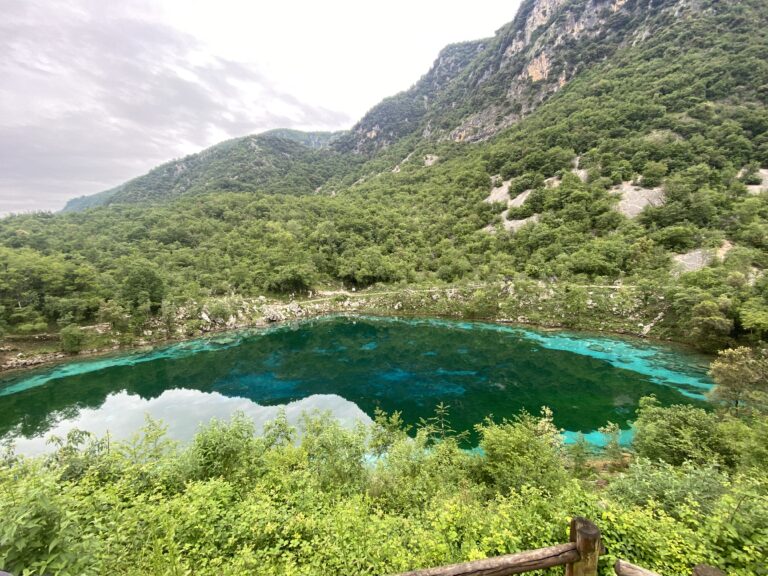Ecotourism involves discovering nature, combining the pleasure of traveling with care for the natural environment and local communities. Nowadays, ecotourism plays a key role in promoting sustainable development and environmental protection. It is not only an educational tool but also an economic driver for many regions, especially those whose economies rely on tourism.
Guided tours of Lake Cornino
Located in the Cornino Lake Nature Reserve, this lake is known for its exceptional water clarity and beautiful green-blue color. It was formed around 10,000 years ago and is a post-glacial lake. Length – 140 m, depth – 8 m. The lake has an eutrophic character, meaning it is highly biologically productive. Animal species found here include reptiles such as the horned viper, amphibians like the fire salamander, and birds such as griffon vultures, great tits, and jays. The vegetation consists of steppe and xerophilous plants – hardy grasses, thyme, junipers, as well as wild roses and hawthorns. In the lower parts of the hills, juniper shrubs and thickets grow. Walking along the educational trails – there are several hiking paths around the lake, ideal for a stroll or a longer hike. Information boards provide detailed information about the local flora and fauna. The trails are easy and suitable for families with children, with resting areas and benches available.
Canal Novo Valley Nature Reserve – discovering local flora
Most of the territory of the Canal Novo Valley Nature Reserve is made up of a lagoon — “valle” in Italian — which was formerly used for fishing, from which the reserve takes its name. The eastern part of the valley includes the Redes Natural Park, an area characterized by rich biodiversity. Local communities are actively involved in environmental protection. Due to its proximity to the inhabited town of Marano, a visitor center has been built within the reserve’s lagoon area. Traditional fishermen’s huts have been adapted to serve as restrooms, a restaurant, an educational center, and an observation point with views of the surrounding landscape. In addition to the huts and bird-watching equipment, designed to deepen knowledge about the lagoon ecosystem, a lagoon aquarium has recently been completed. The aquarium offers visitors an immersive experience of the lagoon environment and the chance to discover the creatures living in this unique habitat.
Discovering Valle Da Pesca Nalón: Understanding Sustainable Fishing and Its Environmental Impact
- Sustainable fishing refers to practices that maintain a healthy long-term fish population while minimizing negative impacts on the environment.
This means that fishing does not exceed the natural reproduction capacity of fish populations, does not destroy marine habitats, and avoids the accidental capture of protected species. Sustainable fishing helps maintain a healthy and diverse fish population, which in turn benefits other marine species.
Local communities can maintain harmony with nature by engaging in ecological activities, traditional practices, education, and respecting natural resources.
Specific ways in which local communities can maintain harmony with nature include:
- Community involvement and volunteering:
- Participating in community work related to nature conservation, such as maintaining green spaces or planting trees.
- Environmental education:
- Organizing educational trips, workshops, and cleanup campaigns.
In short, local communities can maintain harmony with nature through ecological actions, education, respect for natural resources and traditions, and joint efforts to protect the environment.


Eco-friendly travel
Travel is a wonderful opportunity to discover new cultures, reconnect with nature, cross boundaries, and relax.
However, traveling also comes with the responsibility to preserve and protect the environment we visit, so that we—and future generations—can enjoy it for many years to come.
When it comes to environmentally harmful emissions, air travel is among the biggest contributors. Pack only the essentials when flying to reduce weight and emissions.
The most eco-friendly ways to travel include:
- Traveling by bicycle
- Traveling by boat
- Traveling by train
- Going on hiking trips
Sustainable habits and respect for natural habitats
Italy is actively working to respect and protect its natural habitats through various initiatives, including the National Biodeversity Strategy 2030 and the ReNature Italy campaign. These efforts focus on conservation, restoration, and promoting sustainable practices within the country.
The National Biodiversity Strategy 2030 is a plan outlining national guidelines for protecting and enhancing biodiversity and ecosystem, aiming to achieve a sustainable balance between environmental protection and the needs of communities.
Fun facts:
Marano is a picturesque town located by the sea in the Friuli Venezia Giulia region.
The town is famous for its “casone” — traditional fishermen’s houses built on stilts, which are a unique feature of the landscape. Marano is surrounded by a lagoon, which is home to a diverse range of fauna and flora. In the past, Marano was an important port and economic center
Cornino Lake
Fauna:
The lake is home to small populations of fish (cyprinids and salmonids), but the presence of the freshwater crayfish is particularly interesting.
Rivers and valleys:
The lake borders the Tagliamento River, considered the last free-flowing river in Europe, and is located in a valley surrounded by mountains.
Unique colors:
The lake is known for its exceptional clarity and deep blue-green water color, which is the result of dominant algae.

